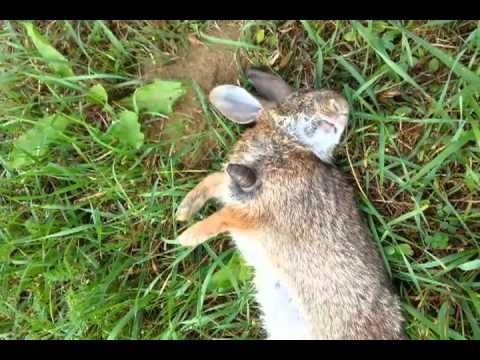
Wolf worms, also known as **larvae of the warble fly**, typically have a life cycle that involves invading their hosts. Imagine being a rabbit or a squirrel, blissfully hopping around, only to find yourself playing host to an uninvited guest! Let’s break down how this happens, which animals are affected, and why it’s significant to understand these interactions in the wild.
What Are Wolf Worms?
Wolf worms are the larvae of the **Cuterebra** species, commonly known as warble flies. These flies lay their eggs on the fur of animals like rabbits, squirrels, and even rodents. Once the eggs hatch, the larvae burrow into the host’s skin. It’s like a tiny invasion that can lead to various health problems for the animal. You might wonder how this affects the creature’s day-to-day life.
Once inside, wolf worms can grow quite large and can cause discomfort and irritation. The presence of the larvae often leads to inflammation and can become infected if not treated properly. Understanding what wolf worms are and how they operate is crucial for anyone caring for these animals. We should be mindful of their health since these parasitic relationships can sometimes be harmful, particularly if the infection becomes severe.
Common Hosts: Rabbits
Rabbits are popular hosts for wolf worms, primarily because they spend a lot of time outdoors where flies are abundant. Imagine a rabbit’s delicate skin, perfect for a worm to burrow into! When a rabbit becomes infected, it usually shows signs like swelling around the area and possible lethargy.
You might be wondering how this impacts their overall health. Well, rabbits can develop infections that lead to severe conditions if not caught early. It’s vital for rabbit owners to keep an eye on their pets, especially during warmer months when the flies are most active. Ensuring they have a clean, safe environment can significantly reduce the risk of infection.
Common Hosts: Squirrels
Squirrels, too, are common hosts for wolf worms. These agile creatures are always on the move, making it easier for warble fly larvae to latch onto them. When a squirrel is infected, the symptoms are similar to those of rabbits. You may notice lumps or bumps where the larvae have entered.
This can be quite alarming for those who love watching these little critters in the wild. Often, an infected squirrel may keep to itself more than usual, hiding away from predators and other threats. It’s nature’s way of telling it to heal! But if you see a squirrel looking off, it’s essential to observe and report it to wildlife experts who can help.
Other Potential Hosts
While rabbits and squirrels are the most common, wolf worms don’t stop there. They can also infect other small mammals like **mice and chipmunks**. Each species has its way of dealing with these invaders, but the consequences can be similar.
For example, if a mouse becomes a host, it may show signs of distress or changes in behavior. These little guys are crucial for the ecosystem, so when they’re affected, it can ripple through the food chain. Observing wildlife in distress helps us understand the broader implications of parasitic relationships, shedding light on our environment’s health.
How Do Wolf Worms Affect Their Hosts?
The impact of wolf worms on their hosts can vary widely, depending on the number of larvae and the health of the animal. Some may experience mild irritation, while others can face severe health issues leading to **infection or even death** if not treated effectively.
Here’s a sobering thought: the larvae can grow up to 2 inches long within the host! That’s some serious squirming. The presence of these worms can lead to a range of complications, including abscesses that may require veterinary attention. Understanding these effects is essential for anyone involved in wildlife care or rehabilitation.
Preventing Wolf Worm Infestations
So, how can we help protect rabbits, squirrels, and other wildlife from wolf worm infestations? Keeping environments clean is a crucial step. This means removing debris and tall grass where flies like to lay their eggs.
Here are a few tips:
- Keep rabbit and squirrel habitats clean and free of debris.
- Monitor pets closely during warmer months.
- Provide adequate shelter to minimize exposure to flies.
Being proactive can help reduce the likelihood of infestations and keep these adorable creatures healthy and thriving.
Treatment and Care for Affected Animals
If you suspect an animal is hosting wolf worms, seeking professional help is crucial. A veterinarian can diagnose the problem and recommend the best course of action. Treatment often involves carefully removing the larvae from the host, which requires skill and experience.
After treatment, the animal may need additional care, like antibiotics to prevent infection. It’s a delicate process, but with the right support, many infected animals recover and return to their natural behaviors.
The Importance of Understanding Wolf Worms
Understanding wolf worms and their impact on hosts is essential for wildlife enthusiasts and caretakers alike. These little worms may seem insignificant, but they play a role in the ecological balance.
By learning about how they affect rabbits, squirrels, and other small mammals, we gain insight into the health of our ecosystems. This awareness helps us take action, whether it’s supporting conservation efforts or being mindful of our local wildlife.
In conclusion, wolf worms may be small, but their impact on the animal kingdom is significant. By staying informed and proactive, we can help ensure that our furry friends remain healthy and happy, contributing positively to their environments.
